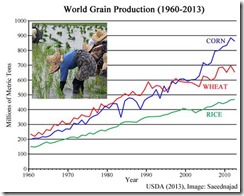Ohio’s Blue Creek Wind Farm: Predictable Underperformance
By Jerry Graf -- December 3, 2013“Many people point to the mandates of Ohio Senate Bill 221 or other such legislation in other states, which require the use of fashionable generation methods for electricity, as justification for subsidizing investment into economically questionable energy generation projects.
To me this is an exercise in circular logic, mandating that we have to use more expensive means of generating electricity, and then using the rising cost of electricity to justify subsidizing more expensive means of generating electricity.”
Jerry Graf – Effective Energy Strategy (March 2013)
In an editorial response printed in the Fort Wayne Journal Gazette (10/21/2013), four co-authors make the following points with regard to the Blue Creek Wind Farm and wind energy in general.
I have rearranged their words for brevity and direct the reader to the Journal Gazette website to read verbatim.…
Continue ReadingDespair: Another Day before a State Public Utility Commission
By Jim Clarkson -- December 2, 2013“Truth is, we don’t need utility regulation at all…. Rather than solving problems utility regulation creates competing interest groups that lobby to gain advantage and handicap competitors. The whole monopoly-regulatory system, root and branch, needs to be abolished.”
It was another day of hearings at the Georgia Public Service Commission for Georgia Power’s 2013 rate case. The various representatives for the fifteen or so parties to the case are filing into the hearing room. Usually I just endure. But today I take mental notes; this is worth penning to share.
The Players (and me)
There’s some camaraderie among the familiar but antagonistic players from previous cases. There’s long tall Alan, who will be representing big retail power users. There’s Terri with a smile and a ready joke. Woe be the man that blushes, she will tease him unmercifully.…
Continue ReadingThankfully Wrong: World Agriculture Booms in Face of Dire Predictions
By Steve Goreham -- November 29, 2013“One must wonder when the climate-damaging effects on agriculture will appear. Maybe rising agricultural production is like rising polar bear populations—the decline begins tomorrow.”
The year 2013 has been a great year for global agriculture. Record world production of rice and healthy production of wheat and corn produced strong harvests across the world. These gains were achieved despite continuing predictions that world agricultural output is headed for a decline.
The US Department of Agriculture (USDA) reports that world rice harvests for 2012/2013 were a record 469 million metric tons. Corn and wheat harvests were also strong, following record harvests for both grains during the 2011/2012 season. The USDA is now projecting world record harvests for corn, wheat, and rice for 2013/2014.
These numbers cap a 50-year trend of remarkable growth in world grain production.…
Continue Reading